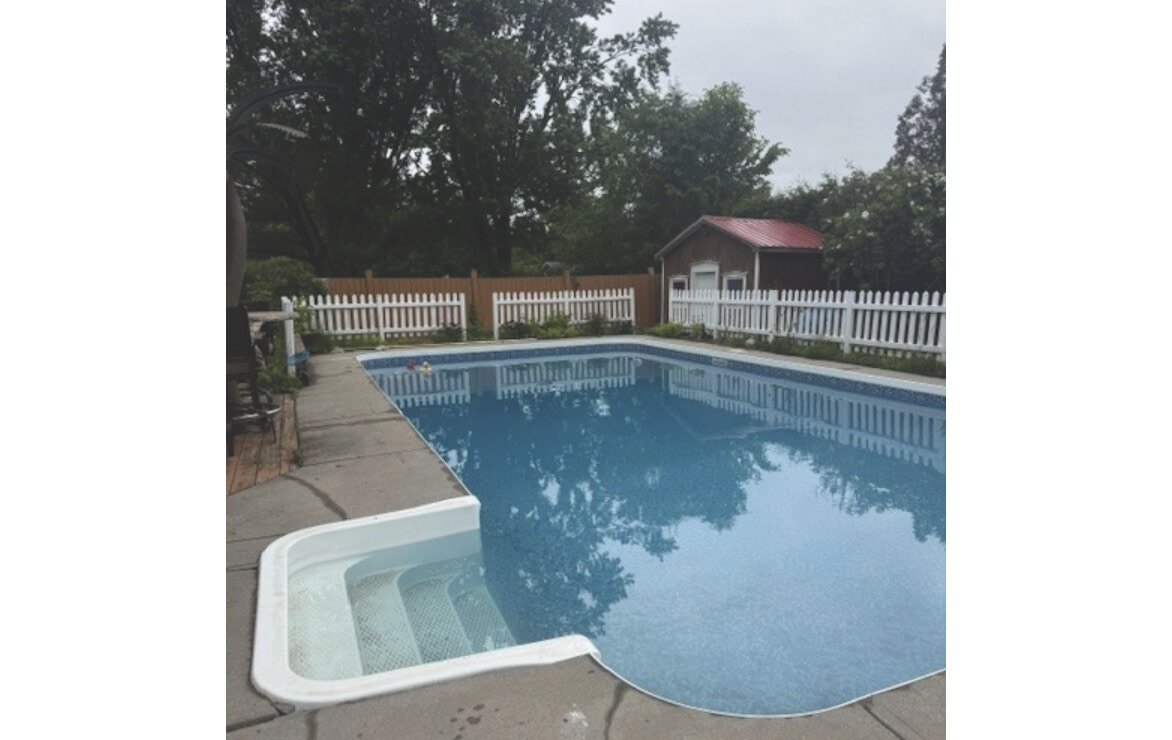Gatineau pool owners must upgrade fences by September or face fines
Tashi Farmilo
Residential pool owners have until September 30 to bring their installations into compliance with Quebec’s updated safety regulations or face fines that could reach several thousand dollars. The rule, which has existed since 2010, is now entering its final enforcement phase. For the first time, older pools – those built before November 1, 2010 – must meet the same safety standards as newer installations.
The regulation, designed to prevent accidental drownings, requires that all residential pools be enclosed by a dedicated barrier that meets specific technical criteria, even if the entire yard is already fenced. This detail has come as a surprise to many homeowners who believed their existing safety measures were sufficient.
One Gatineau resident, who asked not to be named, contacted the Bulletin after learning that her inground pool—already enclosed by a six-foot fence with locked, self-latching gates and a decorative barrier around the pool itself—may still not meet the province’s requirements. “I don’t understand why I’d need a fence within a fence,” she said.
She questioned whether the full burden of compliance should rest on homeowners, especially in cases where visitors bring children onto the property. “The responsibility should fall on the parents to ensure their children are supervised, not solely on the household to build another fence,” she said.
She also expressed concern over the impact on people living on fixed incomes. “How is a retired senior supposed to absorb this cost or find a way to afford it?” she asked. She noted that removing her existing decorative fence to replace it could cause damage to the concrete surrounding the pool. “It’s just not a simple or inexpensive fix.”
While she believes safety is important, she questioned why there was no consultation process with homeowners before applying the same standard to all pools, regardless of their setup. With the regulation already enacted and the deadline only months away, it’s unclear whether public input at this stage would carry legal weight.
Under the regulation, all pool enclosures must be at least 1.2 metres high, prevent the passage of a 10-centimetre object, and be free of features that could aid in climbing. Gates must close and latch automatically. Hedges, shrubs, and decorative landscaping do not qualify as barriers.
There are a few exceptions. Above-ground pools with rigid walls at least 1.2 metres high, or temporary pools standing 1.4 metres or more, may be exempt if access is restricted with a lockable ladder or platform gate. Pools connected to a terrace may also comply if entry points are properly secured with regulation gates.
The City of Gatineau, which is responsible for enforcing the regulation locally, will begin conducting inspections this summer. Properties that received pool permits in recent years will be prioritized. However, the City has no role in setting the law and cannot offer financial assistance or exemptions. Questions about costs, appeals, or broader policy issues must be addressed to the Government of Quebec.
No provincial financial support has been announced to help offset the cost of compliance. Homeowners who have already invested in perimeter fencing and safety features are now being asked to make further modifications to meet a uniform standard.
While the regulation is intended to prevent tragic accidents—particularly those involving young children—some residents feel its one-size-fits-all approach does not reflect the diversity of household circumstances. For now, however, the deadline stands. After October 1, non-compliant pool owners could face fines and increased liability, regardless of how secure their pool already seems.

